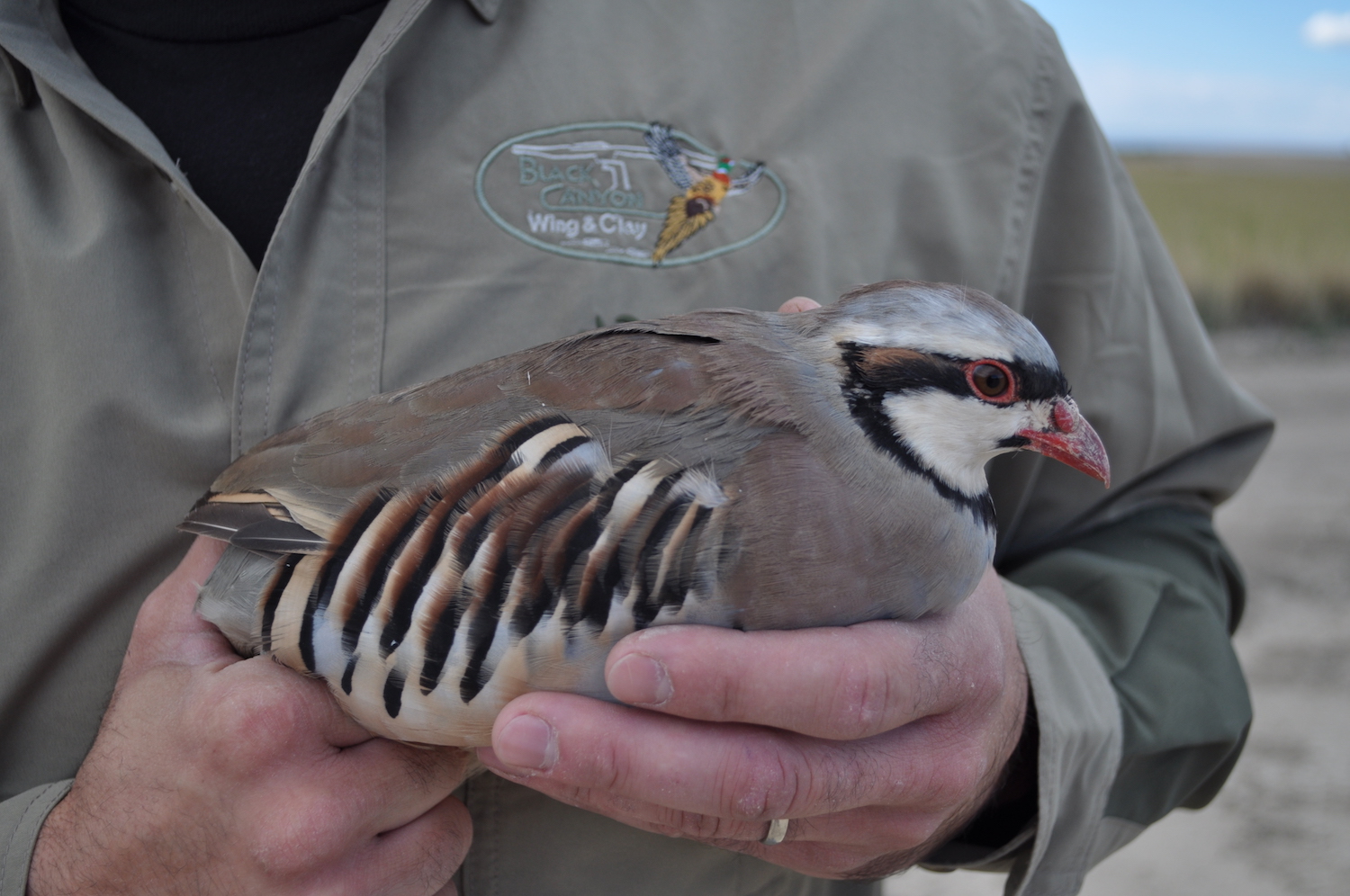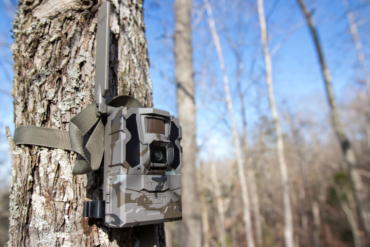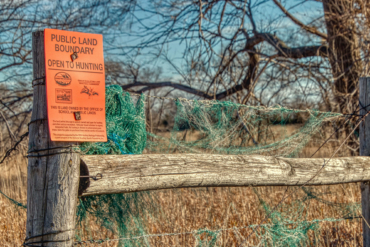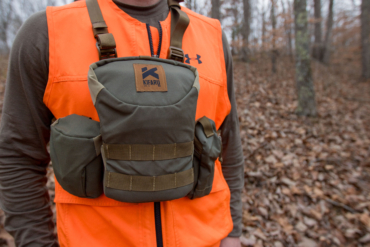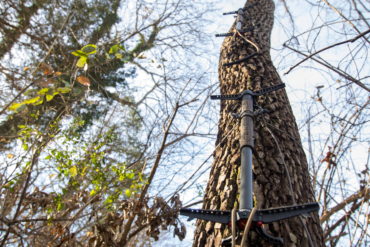A great hunting dog is an educated working partner that requires basic training, fine-tuning, and gentle discipline. The good news is you can do this for your pup on your own time with the right tools.
Perhaps you own a retriever and the thought of a hunting companion appeals to you. Perhaps you don’t own a canine at all, but you daydream of long walks afield through fall colors with a dog at your side and a shotgun in hand.
Either way, owning a properly trained retriever leads to a more fulfilling hunting experience. However, getting to that point requires time, money, and tools. This is not a comprehensive training manual for creating a great hunting dog. But it will give you an idea of how to build your training toolbox for both you and your pup.
Safe Transport for Your Pup
A hunting retriever is going to be a traveling retriever, so crate training is not optional. I segment my transport needs into puppy and adult.
Vari-Kennel: $50-300
The requirements for a puppy are not stringent in my case: a standard Vari-Kennel works fine in getting the puppy to the vet and back, or a local park for socialization.
Once my BFF outgrows the puppy crate, they go into something that offers far more protection. My transport needs could range from 10 minutes to our local training grounds to a month of chasing birds across the U.S.
Gunner Kennel: $500
Few kennels can compare to Gunner. It’s grossly overbuilt, with double-walled, rotomolded construction. A look at the testimonials and twisted metal on its website, where owners tell how the kennel saved their dogs’ lives in crash situations, should sway anyone.
For the custom application, companies like Ainley can build a kennel or complete multicanine solution for every need.
Remote Training Collars
Remote training collars were once known as “shock collars.” They had a bad rap, and rightly so. The devices sold and used today have stimulation settings that range from barely perceptible to human touch. Best of all, remote training collars allow you to reinforce commands at a distance.
Hence, they allow you to capitalize on a teaching moment as no other training tool can.
But be forewarned: In the hands of an inexperienced trainer, remote collars can screw up a canine as easily as boost its confidence. You need to follow protocol when collar conditioning your BFF. It’s a process that takes not hours or days, but weeks and months.
If you’re a first-time user, or if you’ve used a remote training collar with limited success before, seek out a professional trainer and book a few hours with them. Garmin, SportDOG, and Dogtra all have great units for users at any level for $250 or less.
Training Bumpers
SportDOG plastic bumpers have been the standard for decades. And at $7.95, they’re an affordable tool for the arsenal.
Based on what we know about a canine’s eye anatomy, dogs don’t see color. Colors appear as shades of gray. SportDOG bumpers come in three different options: half-black, half-white for high visibility; white for high contrast against dark backgrounds; and orange for more complex work. Leave the orange alone until you and your pup are ready for advanced pattern work leading up to blind retrieves.
SportDOG plastic bumpers are durable, waterproof, and have a valve so you can alter their weight by filling them with water.
Be sure to use a marker to put your initials on all bumpers. It’s customary that if you leave a bumper with ID on it at a club training grounds, it will find its way back to you. Unmarked bumpers go in the finder’s kit.
You’ll need a half dozen black and white to start. If your aspirations include competing on a national level or owning a finished retriever, you’ll need four to five dozen.
Cap Pistol and Blank Pistol
As a hunting canine, your BFF needs to associate the report of a firearm with something good. If you’ve ever seen an upset dog in a thunderstorm, you’ll know that this isn’t the easiest of pursuits. Enter the cap pistol.
Some trainers start by simply clapping over their pup as they eat. They then graduate to the cap pistol after the pup gets accustomed to clapping. Get their food out, fire off a cap, and feed them. Work in baby steps from there. Use the starter pistol only outside, and muffle it with a towel for the first few uses. Have a helper throw a bumper, and then fire the pistol when the bumper is at the apex of its trajectory.
This is a Pavlov’s dogs kind of ordeal. It takes time, patience, and attention to the dog’s individual needs to prevent fear and instill excitement through gentle conditioning. Don’t rush this one.
Birds
No birds? No bird dog. Sources for birds include game bird breeders and hunting preserves. You can also start your young puppy on freeze-dried pheasant wings, available for $7-14 at Cabela’s.
Let’s get one thing straight: No matter how hard-flying the birds are, shooting at hunting preserves is not hunting. It is not reading a map and compass, using terrain and wind, and working as a team with your BFF to outwit wild birds that have been evading predators from day one. It is, however, awesome and necessary training.
Once life leaves a bird, it can be repurposed. Dry it, wrap it in plastic, and stick it in your freezer for future use.
Whistle
The Fox 40 has been the standard for everything from canine handling to river rescue.
A whistle is a great device to reach out and communicate with your dog when it’s windy and it’s in deep cover. In your basic obedience training, you should be using bridging techniques so your canine understands voice, whistle, and hand signals for most commands.
Marking Tools for Training
There will be times when you want to mark a location for a bumper to be thrown, or mark a blind retrieve, or mark a field for pattern work. Classic orange marking tape is great for that, and if you’re a big-game hunter, you might already have it in your arsenal.
You’ll want to see locations when marking them, but you don’t want your BFF to see them. Remember, canines cannot see color. The caveat is that if your piece of ribbon is flapping in the breeze, illuminated by the sun against a dark background, your BFF will immediately pick up on it. So be smarter than your pooch.
There are times where you will want your BFF to identify a spot, like in establishing pattern blinds. White marking flags are the right tool for the job, and inexpensive.
A Handler’s Bag
This could be a bag that you currently have, but it needs a job. Or you could purchase a purpose-built bag. The Mud River Handler’s Bag is highly rated and designed for the dog trainer. It’s also a relatively affordable buy at under $50.
I want my training bag to hold at least two-dozen training bumpers. I want it to be highly ventilated. Bumpers will get wet and need to dry. With ventilation, you can also use it for live birds in a pinch. I want a dedicated compartment for orange marking tape, a slip pocket for white flags, secure zippered compartments for electronics, remote launcher transmitters, blank pistols, and blanks.
It’s nice to have all these things in one place.
A Note on Retrieves and Distance
It happens all the time in hunt tests: A bird goes down at the 60-yard mark. The handler releases the dog. The dog gets to 35 yards and starts to hunt. It’s unable to fathom that a bird could drop beyond what their handler is capable of throwing. That handler never had a helper throw a bumper beyond the handler’s own maximum throwing distance.
Retrievers will retrieve at distances that they have been trained for. Add another 10 yards, and they are useless.
In hunting situations, it’s highly likely that your dog will see retrieves of your throwing distance. While you may shoot that high, overhead pheasant at 35 yards, it can sail for a long distance. Make sure to incorporate long-distance retrieves to help your dog reach its maximum potential in the field.
This Is Only the Beginning
If you get serious about retriever training, the above will just be a start.
Soon, you will discover wingers and remote release cages. The everyday tools of the trade — decoys, calls, blinds, boats — will be part of the collection. You’ll likely need a truck to haul all of this around. And don’t forget hunt test fees, travel to the heartland for a few weeks to chase birds, and the book of excuses you’ll write to go hunting with your well-trained dog.
Everything about training canines is addicting. It is also part of the incredible responsibility that you take on when you bring a canine into your home and heart. While a dog may only be one part of our lives, we are the entirety of theirs.





